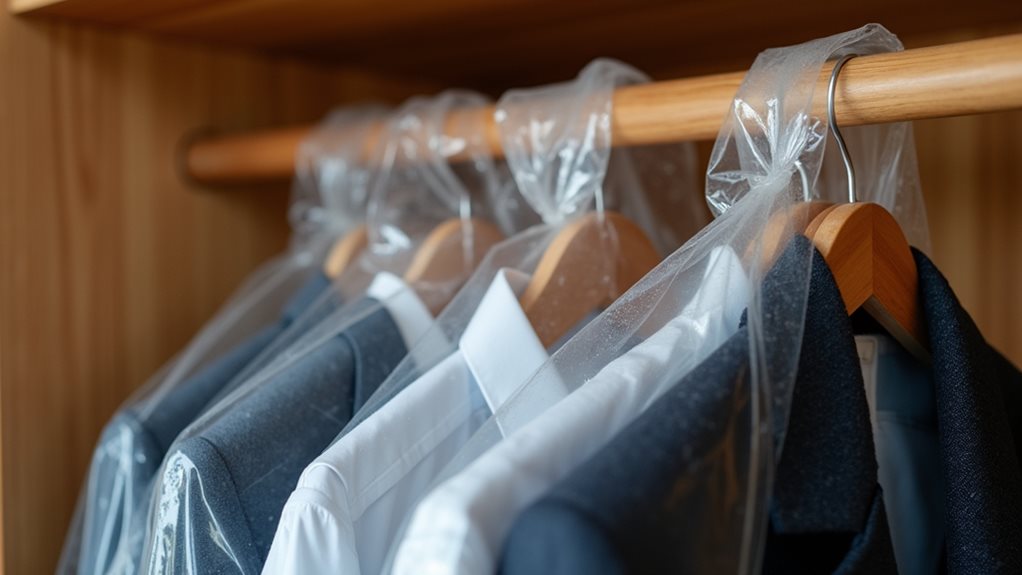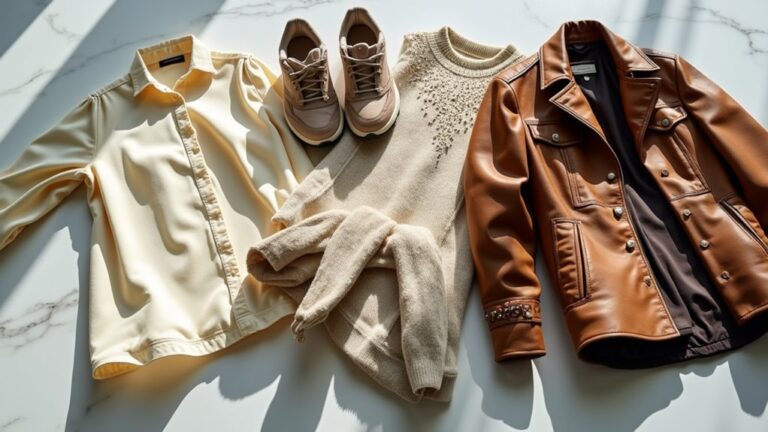Yes, it’s definitely bad to keep your clothes in dry cleaning bags long-term, and I learned this the hard way when I discovered my favorite silk blouse had developed yellow stains after months in plastic storage. Those bags trap moisture that creates a breeding ground for mildew, while chemicals react with humidity to weaken fabric fibers and cause discoloration. Your garments need to breathe, and there are simple alternatives that’ll protect them properly.
Why Plastic Bags Damage Your Clothing Over Time
While most of us have hung freshly dry-cleaned clothes in our closets without a second thought, leaving them wrapped in those flimsy plastic bags creates a surprisingly hostile environment for your favorite garments.
That innocent-looking plastic dry cleaner covering becomes a moisture trap, creating the perfect breeding ground for mildew while preventing your cleaned items from breathing properly.
I learned this lesson the hard way when I discovered my grandmother’s vintage blazer had developed unsightly yellowing after months of garment storage in its original bag.
The chemicals in plastic react with trapped humidity, gradually weakening fabric fibers and causing irreversible discoloration that no amount of re-cleaning can fix 😔.
For optimal garment care, experts recommend removing clothes from plastic bags within a few days and switching to breathable fabric bags or well-ventilated closet storage to preserve your clothing’s integrity.
The Hidden Risks of Moisture and Chemical Reactions
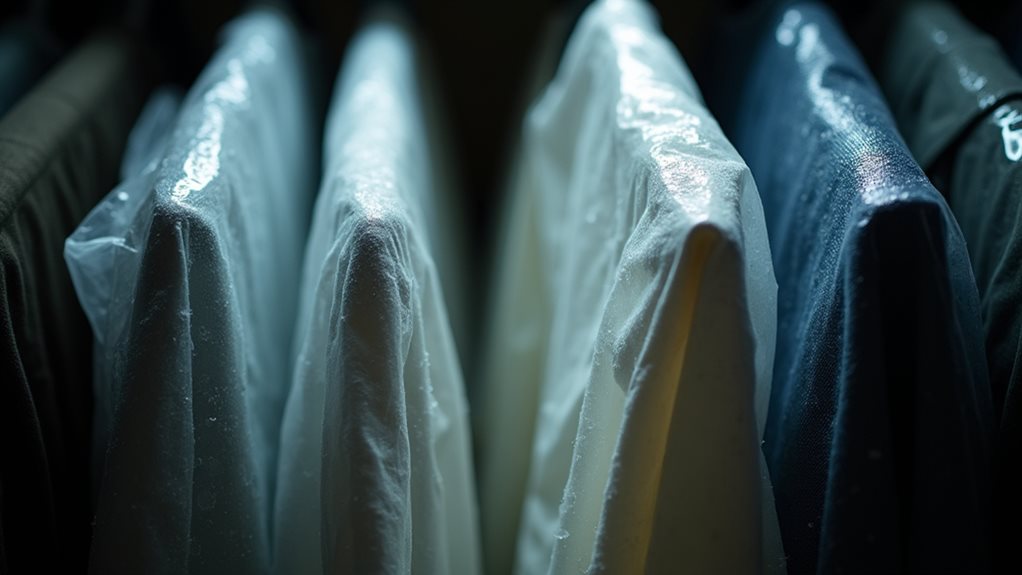
When you peel back that plastic covering from your dry-cleaned clothes, you’re fundamentally releasing a slow-motion chemical battle that’s been brewing inside that supposedly protective barrier.
That innocent plastic bag isn’t protecting your clothes—it’s orchestrating their slow chemical destruction while you’re not looking.
Those plastic garment bags don’t just trap air—they create a mini greenhouse where moisture mingles with chemicals like BHT, turning your favorite white blouse into a science experiment gone wrong.
I learned this the hard way when my wedding dress emerged from long term storage looking like it’d been dipped in weak tea 😅.
The yellowing happens gradually, sneaking up on you while humidity and plastic chemicals dance their destructive waltz.
Even worse, residual PERC solvents from the dry cleaning process can remain trapped in the fabric and continue off-gassing inside those sealed plastic bags, creating a concentrated chemical environment that accelerates fabric deterioration.
Your clothes deserve better than becoming casualties in this invisible war between moisture and synthetic materials.
How Long-Term Storage in Plastic Affects Different Fabrics
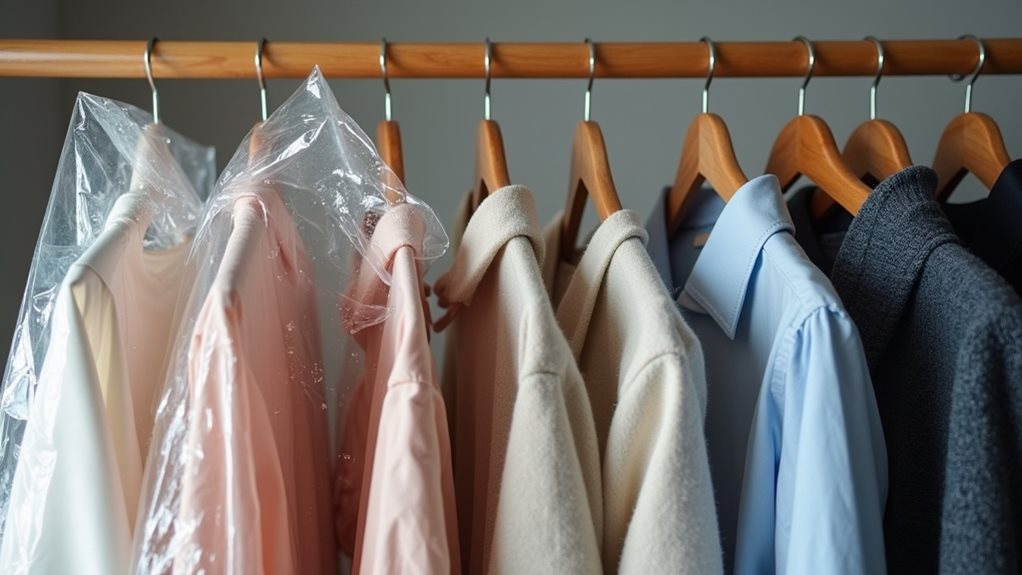
Not all fabrics suffer equally under plastic’s suffocating grasp, and understanding these differences can save you from heartbreak down the road.
Your delicate silk blouses and wool sweaters face the worst fate, as these natural fibers desperately need to breathe and become prime targets for mildew when trapped in plastic bags.
Meanwhile, that cotton garment you’ve stored away might surprise you with unsightly yellowing, thanks to BHT chemicals reacting with trapped moisture.
Synthetic fabrics aren’t immune either—they’ll gradually lose their vibrant colors through chemical leaching.
I learned this lesson the hard way when my grandmother’s lace wedding dress became brittle after years in plastic storage 😢.
These delicate fabrics that required professional dry cleaning in the first place deserve even more careful storage consideration to preserve their integrity.
Each fabric type has its own timeline of deterioration.
Breathable Alternatives That Actually Protect Your Garments
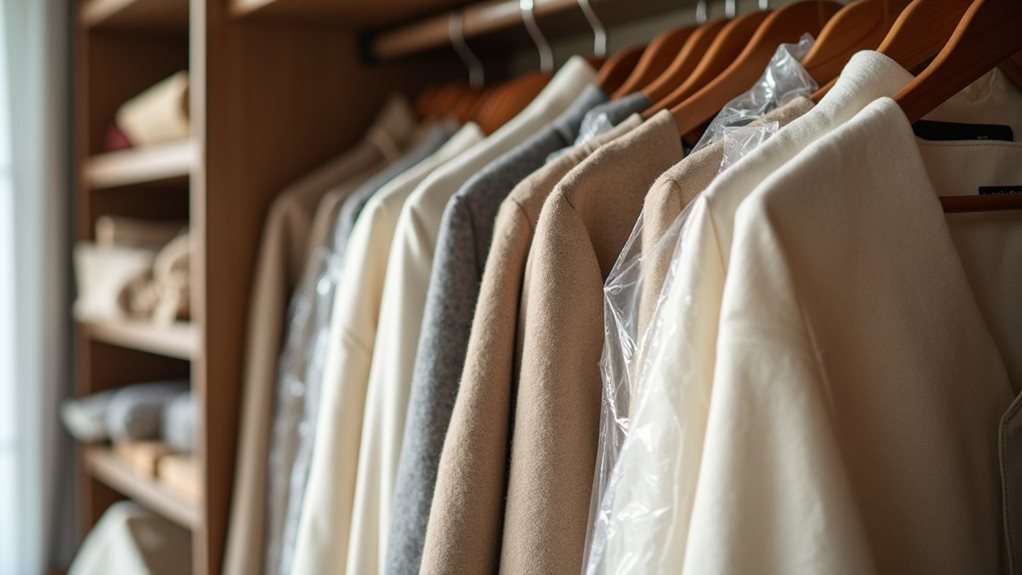
Fortunately, you don’t have to resign yourself to watching your favorite garments deteriorate in plastic prisons, because several breathable alternatives can rescue your wardrobe from this suffocating fate.
These breathable materials work like tiny ventilation systems, allowing air circulation while keeping dust and pests at bay.
Here are four game-changing solutions for storing clothes safely:
- Cotton garment bags – The gold standard that lets fabrics breathe while blocking dust 🌟
- Zippered cotton covers – Perfect for suits and dresses needing full protection
- Repurposed pillowcases – Your wallet will thank you for this clever hack
- Mesh nylon covers – Excellent visibility while preventing insect damage
These alternatives prevent the moisture buildup that turns your beloved pieces into science experiments.
By using these breathable storage options, you’ll preserve fabric integrity just like professional dry cleaning services do when they use chemical solvents instead of water to maintain the quality of delicate materials.
Best Practices for Storing Dry Cleaned Items Safely

Since you’ve discovered the breathable alternatives that’ll keep your garments happy, it’s time to master the art of proper storage that transforms your closet into a preservation sanctuary rather than a fabric graveyard.
First, remove clothes from those plastic bags immediately – I learned this lesson after finding my favorite blazer looking like it’d been through a humidity marathon 😅.
When storing clothes in plastic becomes unavoidable for travel, make it temporary. Keep everything completely dry before storage, because moisture plus fabric equals disaster in my experience.
Use cedar blocks to keep pests away while maintaining airflow, and check your stored items monthly like you’re tending a garden – your future self will thank you.
If you notice any perspiration stains on your garments before storage, consider that dry cleaning may have limited effectiveness against these water-based stains since the chemical solvents used don’t tackle water-soluble sweat components as well as specialized treatments.

